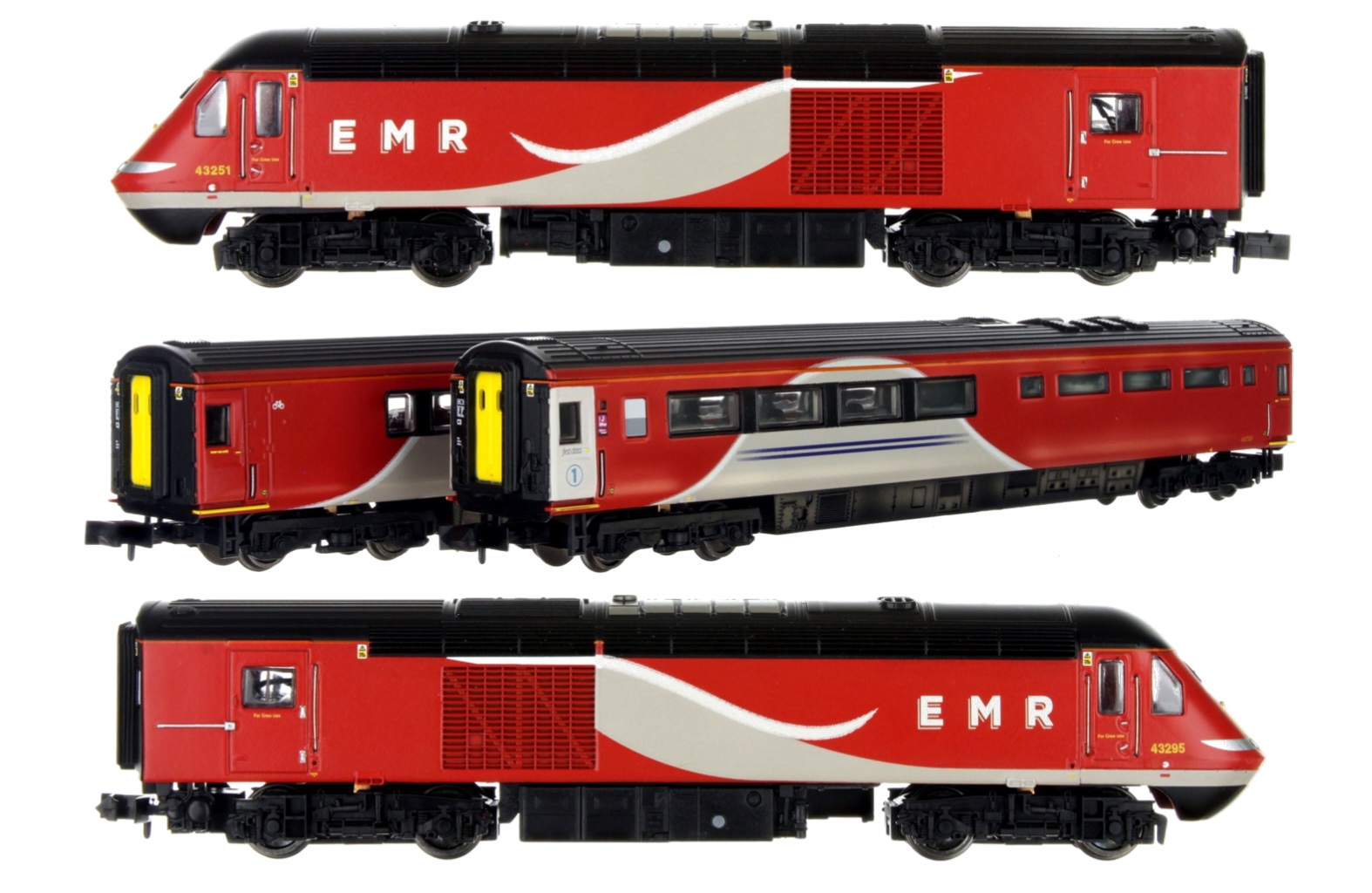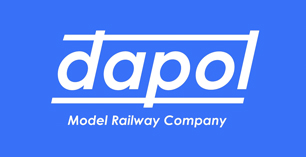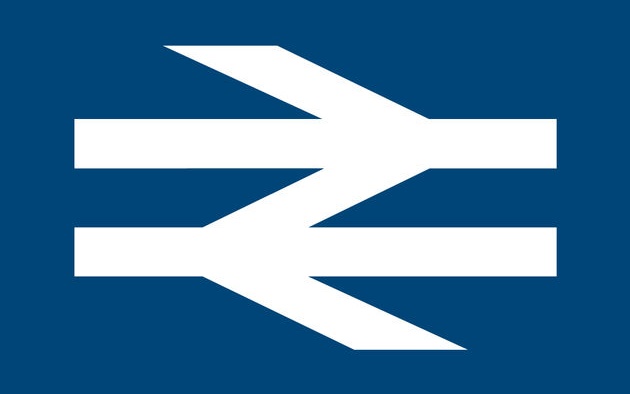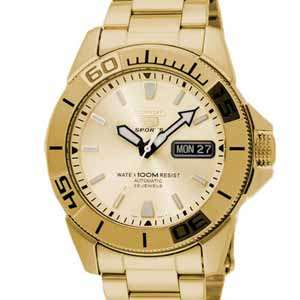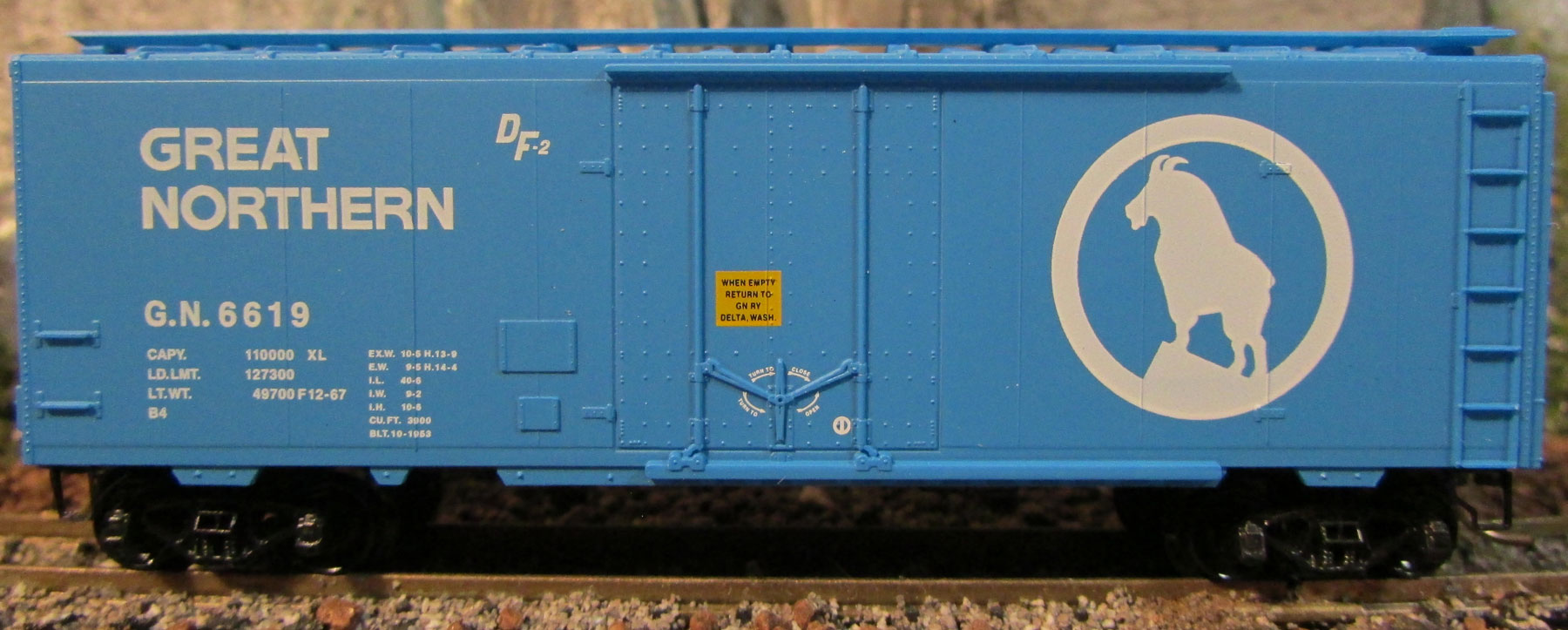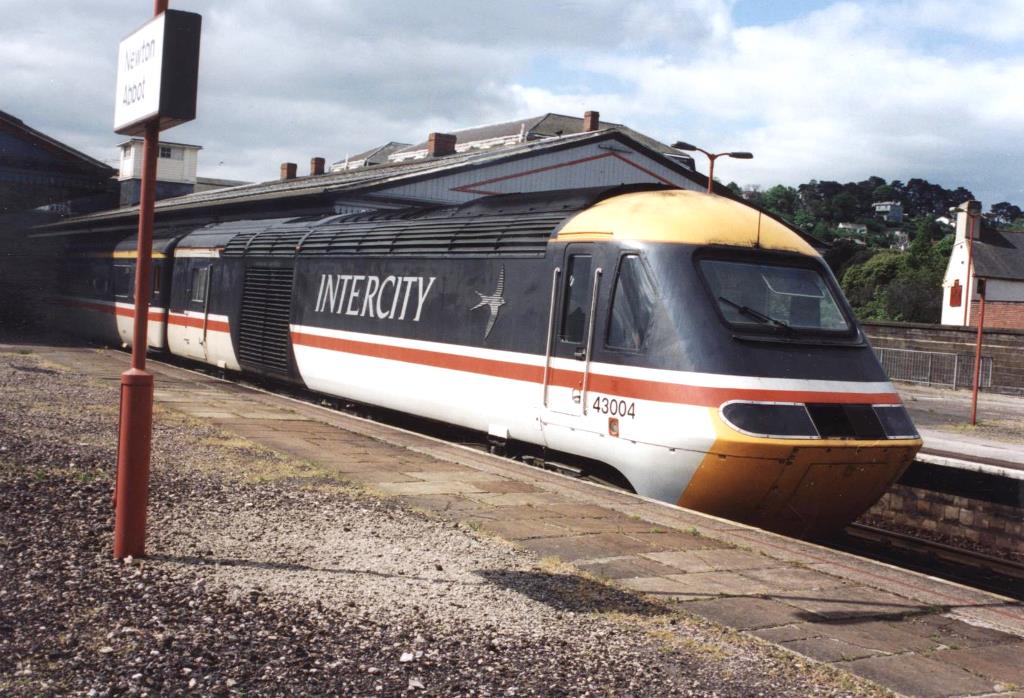Specific Item Information: The British Rail Class 43 (HST) was designed by BR Derby and manufactured at BREL Crewe between 1975 and 1982. Many would say the HST reflects the pinnacle of diesel locomotive design, holding and retaining the world speed record for a diesel locomotive. In all 197 diesel power cars were manufactured to provide a high-speed passenger service in a time when public budgets were constrained and mass electrification of lines was not financially viable. A testament to the success of the design is that 193 of the power cars are still in service today, with only three being scrapped due to accidental damage and one being preserved at the NRM. After privatisation of BR, the fleet has been distributed amongst various operators including East Coast, East Midlands Trains, Grand Central, Cross Country, First Great Western and Virgin Trains. The HST was originally built without buffers. However, to allow it to act in conjunction with Class 89 and 91 electrically powered locomotives on the electrified East Coast line, eight power cars were fitted with buffers. Network Rail has also converted a HST as a measurement train. This is packed with measurement and safety equipment and is used on the West Coast line to ensure lines are fit for use and safe for high speed and tilting locomotives.
Model Information: Model introduced in 2011. Delivered only in set comprising a motorized power car, a dummy power car and two Mark 3 coaches (except otherwise mentioned).
- From 2011 to 2015, the set comprises one First Open (TF) trailer and one Standard/Second Open (TS) trailer.
- From 2018 on, the set comprises one Restaurant Standard Buffet (TRSB) and one Guard Standard (TGS) trailer.
The HST Mark 3 coaches are without buffers.
Features:
Dapol's magnetic couplings can also be fitted (one pair supplied in the box).
The couplers are truck-mounted on the power units and body-mounted on the coaches.
- From 2011 to 2015, the set comprises one First Open (TF) trailer and one Standard/Second Open (TS) trailer.
- From 2018 on, the set comprises one Restaurant Standard Buffet (TRSB) and one Guard Standard (TGS) trailer.
The HST Mark 3 coaches are without buffers.
Features:
- Fully detailed bodyshell with separately fitted parts
- 5-pole "Super creep" motor
- All wheel drive & All wheel pick-ups
- Directional lighting. Lighting configuration (one or two white front lights) depends on the road name.
- Coaches are light bar ready (sold separately)
Dapol's magnetic couplings can also be fitted (one pair supplied in the box).
The couplers are truck-mounted on the power units and body-mounted on the coaches.
DCC Information: Accepts NEM 651 / NMRA 6-pin decoders.
Two decoders are required: one for the motorized power unit, and one for the dummy power unit (light only).
Two decoders are required: one for the motorized power unit, and one for the dummy power unit (light only).
Prototype History: The British Rail Class 43 (HST) is the TOPS classification used for the InterCity 125 High Speed Train (formerly classes 253 and 254) power cars, built by BREL (British Rail Engineering Limited) Crewe Works from 1975 to 1982.
This diesel-electric locomotive is rated 2,250hp (Engine) / 1,770hp (At Rail) , with a tractive effort of 17,980 lbf (Max) / 10,340 lbf (Continuous). A total of 197 (Power Cars) & 848 (Mark 3 Coaches) have been built. A set consists of two Class 43 power cars, one at each end of a fixed formation of Mark 3 carriages, the total of which differs by operator.
The class is officially the fastest diesel locomotive in the world, with an absolute maximum speed of 148 mph (238 km/h), and a regular service speed of 125 mph (201 km/h).
Most are still in service in 2018, though they are supposed to be replaced in the forthcoming years.
From Wikipedia
This diesel-electric locomotive is rated 2,250hp (Engine) / 1,770hp (At Rail) , with a tractive effort of 17,980 lbf (Max) / 10,340 lbf (Continuous). A total of 197 (Power Cars) & 848 (Mark 3 Coaches) have been built. A set consists of two Class 43 power cars, one at each end of a fixed formation of Mark 3 carriages, the total of which differs by operator.
The class is officially the fastest diesel locomotive in the world, with an absolute maximum speed of 148 mph (238 km/h), and a regular service speed of 125 mph (201 km/h).
Most are still in service in 2018, though they are supposed to be replaced in the forthcoming years.
From Wikipedia
Road Name History: Abellio East Midlands Limited,[2] trading as East Midlands Railway (EMR), is a train operating company in England, owned by Abellio, and is the current operator of the East Midlands franchise. With the onset of the COVID-19 pandemic leading to a collapse in revenues in March 2020, the franchise was suspended and replaced by an Emergency Measure Agreement for six months under which the Department for Transport assumed responsibility for all revenues and costs and EMR was paid a management fee.[9] This was superseded by an Emergency Recovery Measures Agreement (ERMA) under which the original franchise agreement was terminated. The franchise will operate until March 2022.[From Wikipedia
Brand/Importer Information: Dapol Ltd is a Welsh model railway manufacturer based in Chirk, Wales. The factory where design and manufacturing take place is just over the border in England. The company is known for its model railway products in N gauge and OO gauge. Dapol's name is a play on its founders David and Pauline Boyle's names. He owned a model concern Highfield Birds & Models. In 1981 he first tried to buy the Airfix and Mainline ranges. The Dapol brand name was first used in a Railway Modeller advert of September 1983. The first Dapol wagons (for OO) were announced to become available on 20 November 1983. From 1 March 1984 ex Airfix railway kits became available.
Dapol manufactures a growing range of N gauge locomotives, coaches and wagons, and is the main competitor of Graham Farish in the British 'ready-to-run' market. Continuous improvement in model specifications has led to the introduction of 40:1 gearing in locomotive drive mechanisms, NEM couplings on all stock, and LED lighting strips for coaching stock (yellow for 'older' coaches, to represent incandescent illumination, and white for more modern coaches and EMUs to represent fluorescent fittings).
Dapol manufactures a growing range of N gauge locomotives, coaches and wagons, and is the main competitor of Graham Farish in the British 'ready-to-run' market. Continuous improvement in model specifications has led to the introduction of 40:1 gearing in locomotive drive mechanisms, NEM couplings on all stock, and LED lighting strips for coaching stock (yellow for 'older' coaches, to represent incandescent illumination, and white for more modern coaches and EMUs to represent fluorescent fittings).
Item created by: CNW400 on 2022-01-14 12:19:56. Last edited by CNW400 on 2022-01-14 12:29:03
If you see errors or missing data in this entry, please feel free to log in and edit it. Anyone with a Gmail account can log in instantly.
If you see errors or missing data in this entry, please feel free to log in and edit it. Anyone with a Gmail account can log in instantly.


